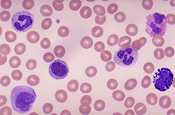Unit 4
Objectives
This unit describes how the body protects and eliminates microbial invaders. Remember, antibiotics have only been around for the last seventy years. Consider how humankind has survived or in some cases didn't survive infections and outbreaks prior to and since the advent of antimicrobial agents.
1. Microbe-Human interactions
- Differentiate between infectious and non-infectious disease.
- Describe the purpose of “normal flora” in the respiratory and GI tracts and flora found on the skin.
- Describe the major steps in disease development.
- Define the virulence factors produced by organisms and their functions.
- Identify the stages of an infectious disease.
- Differentiate between signs and symptoms of disease.
- Compare/contrast the following terms related to disease:
- Sporadic, endemic, epidemic, pandemic
- Local, focal, systemic
- Primary, secondary, mixed
- Acute, chronic
- Latent, inapparent
- Bacteremia, septicemia, pyemia, toxemia, viremia
- Non-communicable, communicable, contagious, carrier
- Mechanical vectors/biological vectors
- Pathogenicity, virulence
- Infectious, contaminated
- Susceptibility, resistance
- Saprophyte and parasite.
- Define epidemiology, prevalence, incidence, mortality and morbidity rates
- Define endemic, epidemic, sporadic, and pandemic
2. Host Defenses – First and Second Lines
- Differentiate between specific and non-specific body defenses.
- Discuss the significance of species and individual genetic makeup in natural immunity
- Compare/contrast innate and acquired immunities.
- Identify the mechanical actions of the various body regions, which help prevent the invasion and multiplication of disease organisms.
- Discuss the distribution of phagocytes in the body and identify the various cell types involved.
- Name and identify the role of specific chemical factors other than antibodies that play a significant role in a host’s resistance.
- Describe the events and outcomes of the complement cascade.
- List the four cardinal signs of inflammation and explain the cause of each.
- Define the following terms: febrile, pyrexia, pyrogen, pyogen, suppurative, purulent.
- List the causes of fevers and explain the mechanism for producing fever.
3. Adaptive Specific Immunity – Third Line of Defense
- Explain and give examples of each of the following types of acquired immunity and indicate the relative length of protection for each type:
- Natural passive
- Natural active
- Artificial active
- Artificial passive
- Compare/contrast the chemical nature of antigens and antibodies.
- Explain the role of each of the following in immunity:
- T-lymphocyte classes, B-lymphocytes. Plasma cells and Macrophages
- Compare/contrast cell-mediated and humoral immunity.
- Define the characteristics and functions of the Immunoglobin classes
- Define an antibody titer and name common tests used to determine these values.
4. Immunization
- Differentiate between passive and active immunization.
- Explain how antigens differ in vaccines that contain toxoids; killed, inactivated, or attenuated organisms; or subunit components.
- List the diseases for which vaccines are available and name the vaccines.
- Describe the characteristics of an “ideal vaccine”.
- List problems encountered in vaccine use.
- Define “antiserum”, “antivenin”, and “antitoxin” and conditions when they should be used.
5. Disorders in Immunity
- Describe the hypersensitivity reactions, the systems and mechanisms involved with respect to:
- the lymphocytes involved;
- any Ig classes involved;
- the specific antigen type selected; and
- the relative times involved in the reactions.
- Identify the routes by which allergens enter the body.
- Compare autologous, homologous and exogenous antigens and relate them to hypersensitivities or autoimmune disease.
- Distinguish between immunodeficiency and immunosuppression.
Readings TALARO: Chapters 13, 14, 15, 16, & 17
Laboratory Activities and Objectives:
- Identify formed blood elements. Interptret differential results with respect to infectious diseases.
- Interpret results of agglutination tests.
- Perform and interpret other laboratory activities assigned.
© 2015 George Wawrzyniak. All Rights Reserved.
|
Unit 4 Documents
Objectives
Lecture 8
Lecture 9

|
